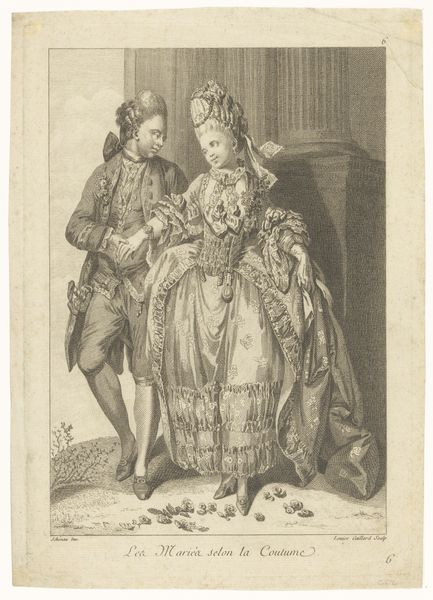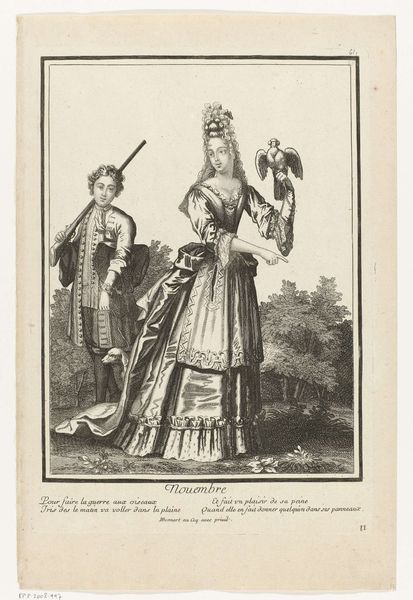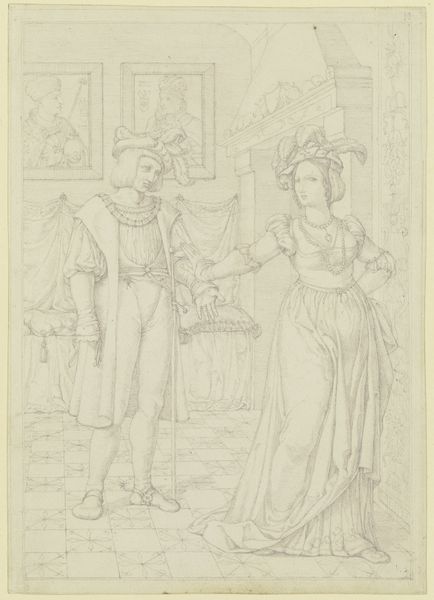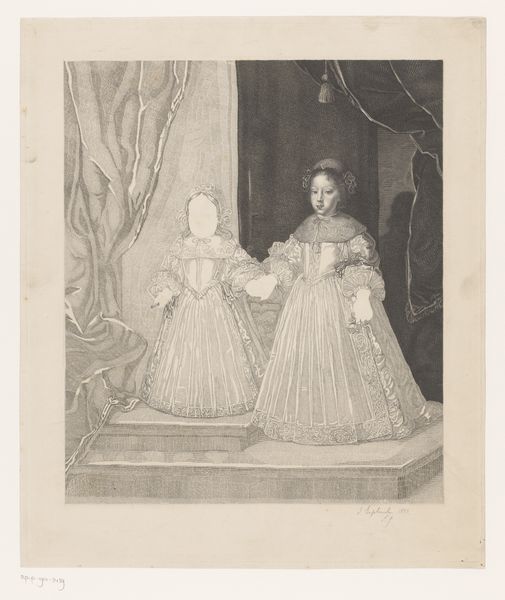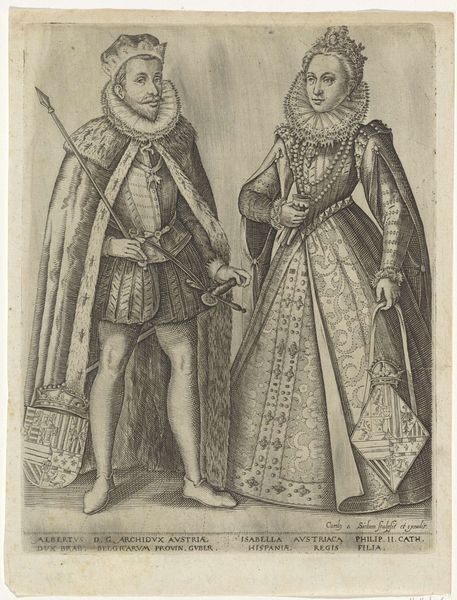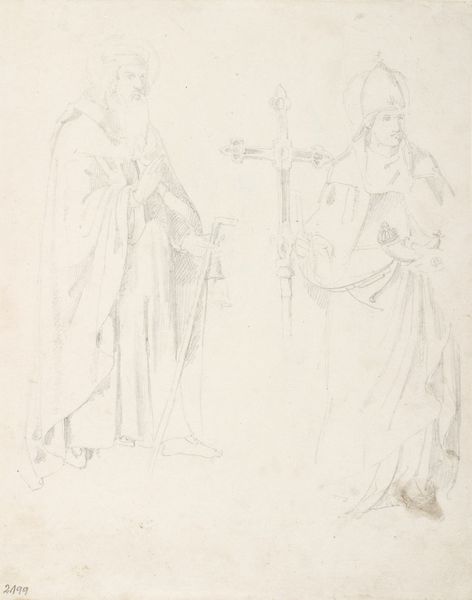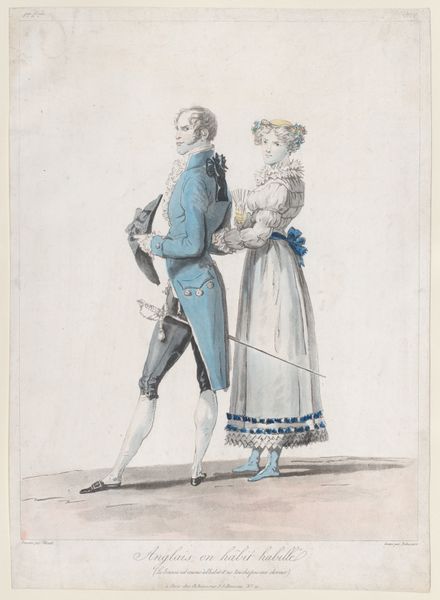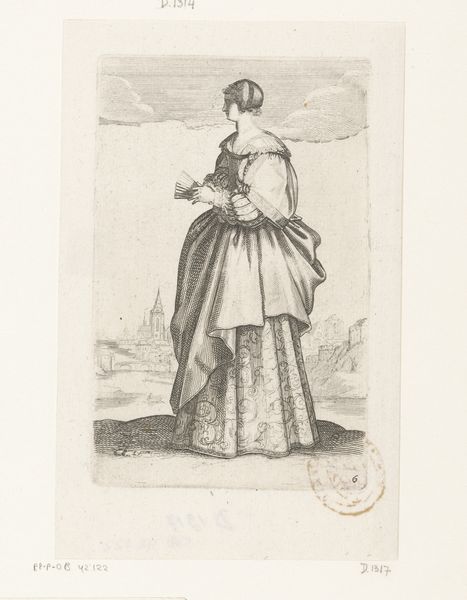
drawing, print
#
portrait
#
drawing
# print
#
england
#
romanticism
#
history-painting
#
academic-art
Dimensions: Plate: 14 3/4 × 10 3/8 in. (37.4 × 26.4 cm) Sheet: 19 5/16 × 14 9/16 in. (49.1 × 37 cm)
Copyright: Public Domain
Editor: This drawing by Robert Dunkarton, dating from 1811 to 1821, depicts Mary, Queen of Scots, and Lord Darnley. It feels very formal and restrained to me. What do you see in this piece, particularly concerning the power dynamics it might be illustrating? Curator: That's a perceptive initial reading. The formality definitely speaks volumes. Think about what it meant to portray these historical figures, particularly within the context of early 19th-century England. Dunkarton, an engraver, made prints, meaning this image could be distributed widely. What narratives were being reinforced, or even challenged, by revisiting Mary’s story, especially considering her contentious relationship with England? Editor: I see what you mean. It’s not just a historical record; it's an interpretation. So, are we supposed to see them as tragic figures or a warning? The print medium makes me wonder who the intended audience was, and what they would have thought. Curator: Precisely! Consider Mary’s Catholic faith and the ongoing tensions surrounding religion and national identity. This image isn’t neutral. The very act of depicting them together, in a composition that emphasizes their status, invites a commentary on power, legitimacy, and the complexities of Anglo-Scottish relations. Editor: It’s amazing how much can be read into a seemingly simple portrait. The rigid poses now feel less about mere formality and more about controlled projection of an image. Curator: Yes, the composition itself is a form of rhetoric. Looking at this through a feminist lens, we could consider how Mary's agency might be subtly undermined or reimagined through Dunkarton’s artistic choices. It makes you question, what histories get told and whose voices are amplified, doesn’t it? Editor: Definitely. I'll never look at a historical portrait the same way again. Thanks! Curator: And thank you for seeing the value of understanding artworks within the sociopolitical narratives they reflect and shape. It truly enhances our appreciation.
Comments
No comments
Be the first to comment and join the conversation on the ultimate creative platform.




